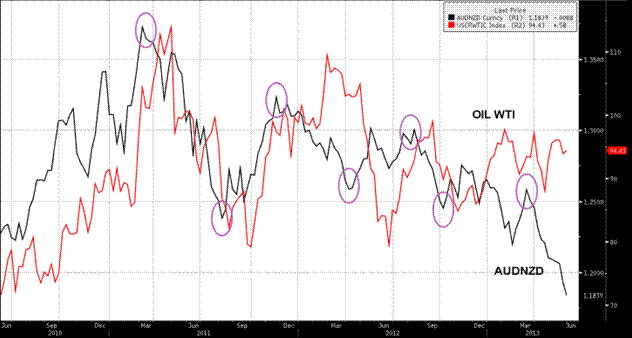The Advantage Of Intermarket Analysis
Post on: 20 Июль, 2015 No Comment

Single-market analysis is the study of one asset class or market in a single country. Intermarket analysis, on the other hand, is the study of multiple asset classes in a variety of markets in nations around the globe. Do investors and traders using the second technique have a significant advantage over those using the first when it comes to returns?
We have all heard financial experts sing the praises of the diversified portfolio. It is never a good idea to put all your eggs in one basket, they say. What they mean is that limiting your investments to just a few companies greatly increases your risk. especially if one or two of your major holdings experiences a meltdown.
Investors who heed this conventional wisdom own a number of stocks in different companies, and maybe also some mutual funds to increase their diversification. If this describes you, congratulations! But before you pat yourself on the back, consider this question: Are you truly diversified if you’re invested in just stocks and bonds and the majority of your holdings are in one national market?
Intermarket Analysis – The Book and the Strategy
According to John Murphy, author of a book entitled Intermarket Analysis, a truly diversified investment approach should include investments in all four major asset classes: stocks. bonds. currencies and commodities. Going one step further, intermarket analysis tells us that a truly diversified portfolio should not limit its holdings to one country, but include holdings in a number of markets around the world. By following multiple markets, an investor gets the big picture and is able to see significant market and economic changes earlier than investors with a single market focus. The multiple-market investor can then move portfolio holdings from one sector or market to another — a practice known as sector rotation — with greater ease as conditions change.
An investor or trader with an intermarket strategy has holdings in a number of countries and watches a number of international indexes in various asset classes, such as bonds, commodities and currencies. Such a portfolio might hold, say, 50 to 60% (rather than 100%) U.S. securities, and the remaining percentage might consist of securities from markets that are the top performers (i.e. showing strong relative strength ) from both a sector and country perspective. Furthermore, the intermarket strategy means using market analysis, including basic technical analysis techniques, to determine and adjust asset allocation according to changing market conditions. Let’s consider how well this kind of strategy might have served a trader over the few years preceding 2004. as compared to an approach that focused solely on the U.S. equity market.
The Hang Seng Index and Semiconductors
As I mentioned above, an intermarket strategy means looking at international indexes and the relationships they share with each other. Take for instance the Hong Kong Hang Seng Index and the semiconductor group, which together have demonstrated a high correlation. The Hang Seng has often lead semiconductors, providing buy and sell indications for semiconductor stocks which the intermarket trader can take advantage of. We’ll demonstrate this using a few examples from a long-term chart comparing the Semiconductor Index (SOXX) and Hang Seng during 1997-2003.
The Hang Seng gave a trend -line break sell signal on Oct. 17, 1997, about the same time as the trend line sell signal on the Philadelphia Semiconductor Index (see number 1 on the chart). The fact that both indexes broke significant trend lines at the same time was a strong signal for exiting semiconductor holdings.
On Oct. 2, 1998, the Hang Seng Index generated a buy signal, but the SOXX didn’t emit a signal until the following week. This means that traders following only the Semiconductor Index, entering at 248, were one week behind those whose outlook included the Hang Seng Index, which gave its buy signal at 200 points (number 2 on the chart).
It was the Hang Seng’s next signal, however, that really gave its followers an edge. The Hang Seng broke a major trend line on Apr. 4, 2000, when the SOXX was trading at 1150, giving a signal to semiconductor holdings. The SOXX, on the other hand, did not give a clear sell trend-line break signal until six months later, on Oct. 6, 2000, when the index was trading at 850. Traders using only the Semiconductor Index attained returns 26% below those traders following the Hang Seng (number 3).
The Hang Seng gave another earlier buy signal on Jun. 6, 2003, (number 4), when the index was at 360. The SOXX, on the other hand, didn’t emit its signal until more than two months later, when the index was trading 10% higher at 400.
Commodities and the Canadian Dollar Strategy
By broadening investing outlooks, intermarket analysis can also provide more opportunity for the investor or trader to protect his or her investments with an effective currency hedge. Quite simply, this means selling stocks or bonds denominated in weaker currencies and buying them in the strongest currencies wherever possible.
Both the Canadian and Australian dollars have, for example, demonstrated strong correlations to commodities. When commodity prices are strong, both do well. Since Canada is right next door to the U.S. trader, he or she is able to buy and sell Canadian stocks or bonds with relative ease. See figure 2 for a chart that plots the relative strength of the Canadian dollar against the U.S. dollar.
Figure 2 – Daily chart of the Canadian dollar divided by the U.S. dollar. Note the long-term trend line break that occurred in April 2002 and the rapid increase in value of the Canadian dollar against the U.S. dollar in the next 18 months. In April, the Canadian dollar was trading at US 63 cents. By December 2003 it was worth US 77 cents, a 22% increase giving a significant advantage to portfolios that contained Canadian dollar based assets. Chart provided by MetaStock.com














